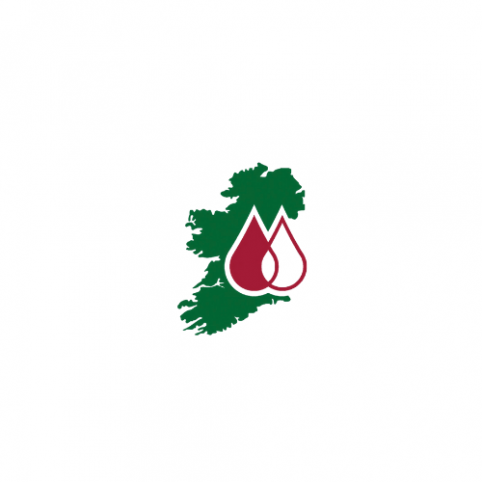Dysmenorrhoea (painful periods)
Women with bleeding disorders and carriers more commonly suffer from period pain. Usual treatments include non steroidal anti- inflammatory drugs such as Nurofen but these should be avoided in women with bleeding disorders because of their anti platelet activity. Alternative painkillers such as paracetamol and codeine based products may be used. The combined oral contraceptives may also help reduce period pain as may an intrauterine system releasing the hormone levonorgestrel (Mirena IUD) (see “Hormonal therapy”)
Haemorrhagic ovarian cysts
When a woman ovulates, a small amount of bleeding may occur with rupture of the egg follicle when the egg is released from the ovary. This may be associated with abdominal and pelvic pain. Women with bleeding disorders are more likely to have significant bleeding at ovulation with resulting pain, haemorrhagic ovarian cysts or even bleeding into the abdominal and pelvic cavity.
Although these gynaecological complications can be treated surgically, non surgical management with the use of appropriate clotting agents (tranexamic acid, DDAVP and coagulation factor replacement) is advisable in women with bleeding disorders. Combined oral contraceptives suppress ovulation and have been successfully used to prevent recurrences
Endometriosis and other gynaecological conditions
Endometriosis is a painful condition in which endometrial tissue, the tissue which lines the uterus, implants in the pelvis and organs outside of the uterus. There is no strong evidence that women with bleeding disorders are more likely to develop endometriosis, fibroids, polyps of the uterus or endometrial hyperplasia (excessive growth of the lining of the uterus) but in a survey of 102 women with vWD by the US Centers for Disease Control, these gynaecological problems were more likely to be reported by women with vWD than women without vWD. Since most of these gynaecological conditions often present with bleeding, women with bleeding disorders are more likely to develop symptoms and therefore to be diagnosed
Menopause
Menopause is the time in a woman’s life when menstrual periods permanently stop. Peri-menopause is a 3 to 10-year period before natural menopause, when hormones are “in transition.” Symptoms of peri-menopause include heavy menstrual bleeding, irregular bleeding and spotting. Since there are other medical reasons for heavy bleeding, and women with bleeding disorders are at the same risk for these problems as other women, a full medical investigation should be done to eliminate other causes of bleeding. As in all women, the cause of the abnormal menstrual bleeding needs to be determined before any treatment is offered. If the bleeding is caused by lack of ovulation, hormone replacement therapy (HRT) will usually control the problem. However, if a woman is already using HRT, she may need to discuss other options with her gynaecologist and her haematologist. She may require other forms of treatment such as endometrial ablation or a hysterectomy.
It is important that women maintain a strong relationship with their gynaecologist even after childbearing years in order to anticipate the combined issues of menopause and bleeding disorders.
Acute adolescent menorrhagia
Menstrual bleeding can be especially heavy at the time of a girl’s first period. Girls and adolescents with known bleeding disorders should be counselled prior to their first period and have a plan for the possibility of acute, severe menorrhagia, which could occur with their first or any subsequent menstrual period. The plan should be made by the gynaecologist and haematologist, in conjunction with the patient and her family. Because of the increased risk of transfusion, girls and adolescents should be immunized against hepatitis A and hepatitis B. Management is beyond scope of this text.
Other types of bleeding
Depending on the bleeding disorder or levels of factor VIII or IX in carriers, women may experience nosebleeds, gum bleeds, bruising and bleeding after trauma. Joint and muscle bleeds can very rarely occur. Women with bleeding disorders and carriers with low levels are at risk for developing bleeding after surgery, dental extraction and medical diagnostic interventions. Therefore, specialist advice should be sought from the haemophilia treatment centre prior to such interventions.
Treatment Options for Other Types of Bleeding
Minor bleeding episodes such as nose bleeds and bruises often do not require medical treatment. Minor bleeds can often be controlled with R.I.C.E (Rest, Ice, Compression and Elevation). However, sometimes medical treatment is necessary. The type of treatment depends on the type of bleeding disorder and the type of bleeding.
Tranexamic acid
DDAVP (Desmopressin)
See page
Coagulation Factor Concentrate Replacement Therapy
Fibrin Glue
In the coagulation process, the final clot is made up of fibrin. Fibrin can be applied directly to the site of bleeding. It is especially useful in tooth extractions and surgery. Over a period of 2 to 4 weeks, the fibrin is absorbed by the body as healing progresses.
